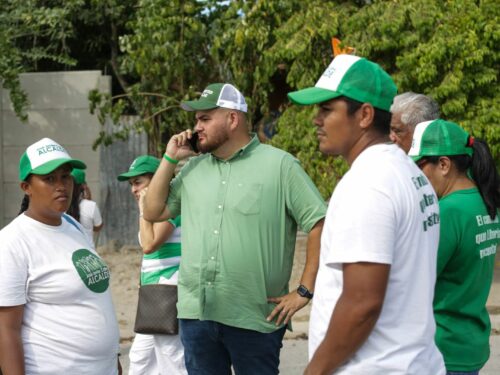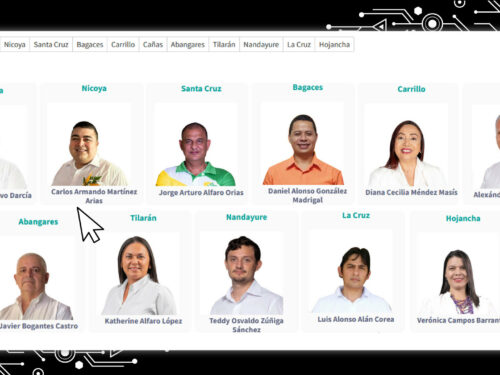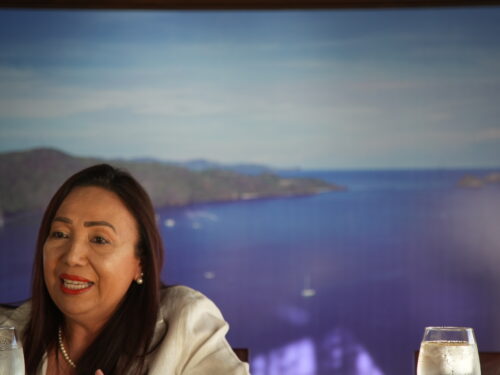
The Municipality of Liberia included the Iguanita Wildlife Refuge within the 6,000 hectares (14,826 acres) of forested areas, cliffs and the higher areas with privileged views of Liberia’s beaches, where they plan to promote hotel, commercial and tourism real estate development.
This is planned in the proposed draft of the Territorial Zoning Plan (Spanish acronym: POT), known as the regulatory plan, an instrument that establishes what can be developed where in each sector of the canton (business, housing, services, industry). Since 2002, Liberia has only had a regulatory plan for the downtown area, and now they want to zone the entire canton.
When asked about including Iguanita Beach and the wildlife refuge in the gray strip of the Gold Coast, the president of the Regulatory Plan Commission who is in charge of Urban Planning and Construction Control for the Municipality of Liberia, José Rafael Jiménez, responded that they received an observation about it and should remove it.
Other protected areas in the province do appear intact on the map.
In the municipal project, the 6,000 hectares are called the “gold coast” and represent 5% of the entire surface to be regulated. Currently, this strip of land looks like a green spot on the Guanacaste coast, but if approved, the panorama would change to a gray spot with urban, hotel and commercial developments of different kinds.
In fact, the “gold coast” is one of five special zones proposed in the regulatory plan, areas that today have a concentration of activities with specific characteristics and needs and that also project construction growth in the future. The others are the historical zone, the academic zone, the institutional zone and the airport zone.
But why create a special “gold coast” district? Jiménez explained that this area near the coast has two or three beaches, “very beautiful views,” a lot of ocean and cliffs.
This condition of views, plus the proximity to the tourism center (Papagayo) tells us that there is a special characteristic that these properties all possess,” he said.
He added that, in practice, this gold coast already exists because the municipality has given construction permits for there, has issued land use certificates and has reviewed preliminary projects. “There is a lot that is being developed, financed and built there,” he added.
According to Jiménez, hotels, sports fields, movie theaters, shops or other developments related to the tourism demand may be set up in the areas closest to the coast. In a press conference with the media, he also said that a sports stadium could even be built.
“We were deciding if large stadiums were possible, and as Renán [Zamora, coordinator of the Urban Development and Control Unit] said, ‘let’s say yes,. What happens if a sheik comes from Israel and puts a soccer team there? Well, we’ll all go to watch the games there,’” Jiménez said.
Meanwhile, the most remote areas will be allocated for housing construction. According to the municipal official, this will make life easier for those who work there, by not having to travel to the center of the canton every day.
The final approval of the regulatory plan may take months, but the administration of President Rodrigo Chaves reported in April that one of the goals of the current administration is to pave the way for the greatest number of municipalities to have a regulatory plan. In two years of the administration, eight municipalities have already approved this instrument and 20 more are in process.
Environmental impact and access
Although the idea of creating the exclusive Liberian gold coast is in draft form, there are already those who are raising warning flags, mainly due to the environmental impact it would involve.
“These areas are part of the natural heritage. They are vulnerable, fragile and should be protected, above all, in a context of climate change,” warned Christian Golcher, a university professor and a representative of civil society on the regulatory plan commission.
According to Golcher, the municipal proposal for the canton’s zoning has a focus on deregulation, on removing any obstacles to development. That’s fine, he said, but it should be balanced with measures to protect vulnerable or environmentally fragile areas.
No one has talked about how to balance environmental fragility on the gold coast,” warned Golcher, a specialist in territorial planning with a doctorate in hydrology.
Another of the questions that arise with the gold coast initiative is whether this will further limit the people of Liberia’s enjoyment of their own beaches.
Damaris Rodríguez, from the Guanacasteca Confraternity, pointed out that in Liberia’s coastal area, the Gulf of Papagayo Tourist Pole already exists by law, which extends to the border with Punta Cabuyal and the majority of Liberians do not have free access there. “At this time, lower class people like us practically can’t go to those places, or there is no access,” she said.
Meanwhile, at Cabuyal beach, there has been a dispute for almost two decades with the Román Ocampo family, who claim rights to 150 meters (492 feet) of land located in the restricted zone. The end use will be defined in a trial scheduled for the month of November.
As a matter of fact, María Lourdes Ocampo, former legislator with the National Liberation Party and current president of the municipal council of Liberia, is one of the businesswomen who claims the right to that land.
The president of the Guanacasteca Confraternity, Gadi Amit, stated that the availability of water is another sensitive point within Liberia’s territorial planning process.
I asked for information about the water resource, what water is available and how they are going to plan on that gold coast because without water, you can’t plan,” he added.
Few know the details
The initiative to create the gold coast in Liberia was made known in the third week of April when the municipality published the first drafts of the territorial zoning plan.
The information emerged amid complaints from community representatives due to the lack of clear and easy-to-understand information about the proposal.
“As a member of the commission, they never presented to me or asked me anything about the gold coast special district,” said Christian Golcher. “I found out at a socialization meeting,” which are meetings with communities to publicize the plan.
In addition to the special zones or districts, Liberia’s POT proposal divides the canton into six large areas or transects that range from the most urban (Transect 6) to the green and most rural zones (Transect 1).
In these transects, several production or commercial activities can be combined with some similarities and the degree of participation will be regulated. For example, in the city center, buildings can share business use on the first floor and residential use on the second level.
To finance the new regulatory plan, the municipality allocated a little more than ¢189 million (about $368,000). These funds come “from a project that is being developed on our beaches,” specified the former mayor of Liberia, Luis Gerardo Castañeda, in a statement published on the municipality’s Facebook in June of 2023, when the regulatory plan project was set in motion.
Municipal engineer José Rafael Jiménez clarified that it has to do with the tax on the construction of a very large hotel in Papagayo, an area that is not covered by the regulatory plan since it has its own planning.
Putting together the Liberia POT was awarded to the consulting company Ecoplan SRL at the end of 2022. In addition, the municipality hired the Housing and Urban Planning Institute (INVU) as a supervisor.
The draft is in the process of socialization among communities, organizations, economic and academic groups, and will be in consultation until the end of July and beginning of August, Jiménez said.
On the municipality’s website and Facebook page, you can find out the dates and places of the next meetings.
You can consult the diagnostic documents and draft maps on the zoning proposal on the municipality’s website in this tab. And if you have questions, observations, recommendations or proposals about the plan, you can send them to the email: [email protected].







Comments